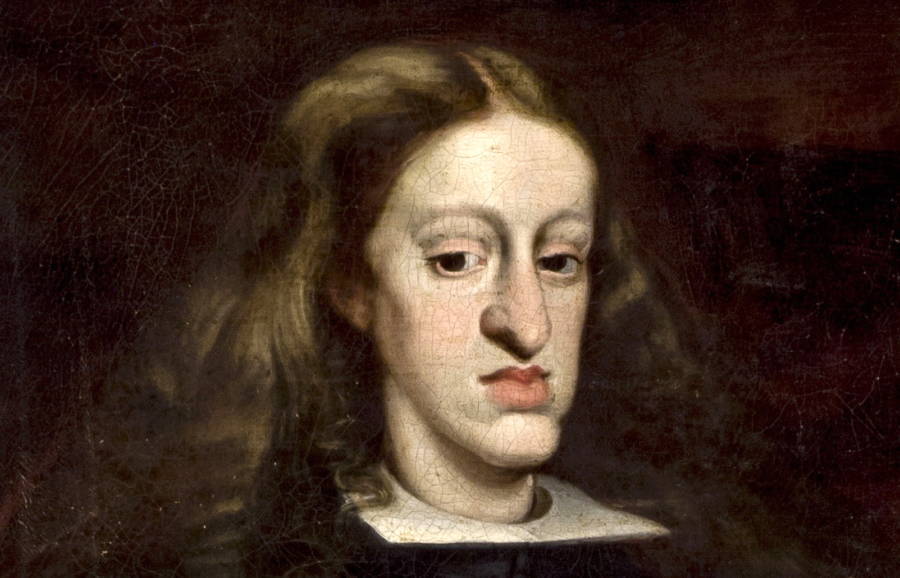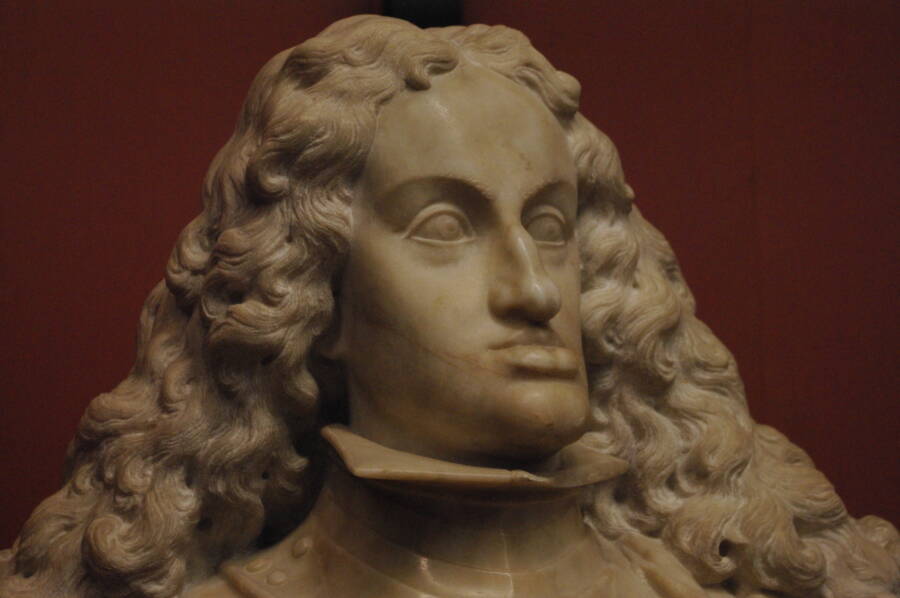Charles II Of Spain: The “Ugly” Royal With A Tragic Backstory

Wikimedia CommonsCharles II couldn’t read or speak properly, and he was prohibited from walking until he was an adult.
King Charles II of Spain would be the last member of the Habsburg family to rule the country. Originally from Austria, this royal dynasty ruled Holland, Belgium, and much of Germany. But horrifically, they had spent 16 generations inbreeding to keep the lineage “pure” — with Charles II so inbred that his grandmother and his aunt were the same person. He was also, as many people put it, tragically “ugly,” by no fault of his own.
Known for his Habsburg jaw, this prominent feature glaringly identified his lineage — but it also prevented him from closing his mouth all the way. Charles II often struggled to chew his food properly. And he had a tongue that was so large that his speech was mostly incomprehensible.
Meanwhile, his legs were so underdeveloped that he was completely prohibited from walking until he nearly reached adulthood.

RG1033/FlickrCharles II died at 39 due to the diseases he inherited from his incestual family.
While he was crowned king when he was four years old in 1665, Charles II never stood a chance as a real ruler. His family was so power-hungry and hellbent on controlling all of Europe that they didn’t bother educating him. He was never even taught how to read. And his mother ruled as regent until his teenage years in hopes that he would improve, but he never did.
Though Charles II eventually got married, his first wife Marie Louise of Orleans said her husband was so “ugly” that she was actually afraid of him. Still, after Marie Louise died in 1689, Charles II became depressed — yet another issue among many that he was already dealing with.
The Habsburgs were intent on having Charles II marry into royalty — and produce an heir — and thus advised him to wed Marie-Anne of Neubourg. It was then that his pituitary hormone deficiency and distal renal tubular acidosis were discovered. The former made him impotent and infertile, while the latter led him to urinate blood. It was clear that there would be no heir.
Born into a household that prioritized power over the health of its offspring, Charles II was given a hand of cards he couldn’t read — and a swath of health issues that saw him die at the age of 39. His death in 1700 not only left the Habsburgs without an heir, but without any alternative plan for the family to continue ruling. The creepy story of their reign was finally over.





